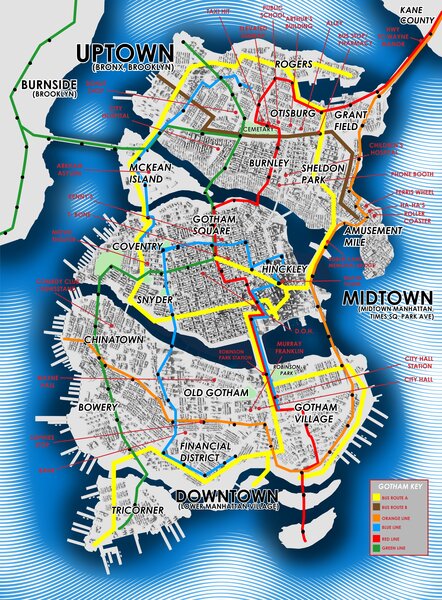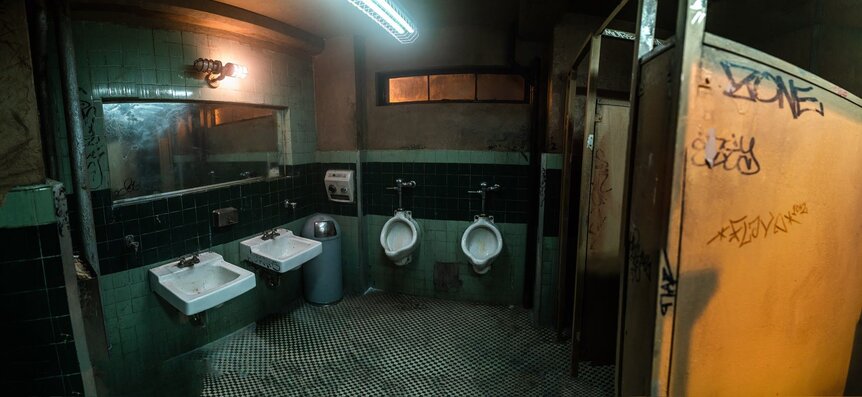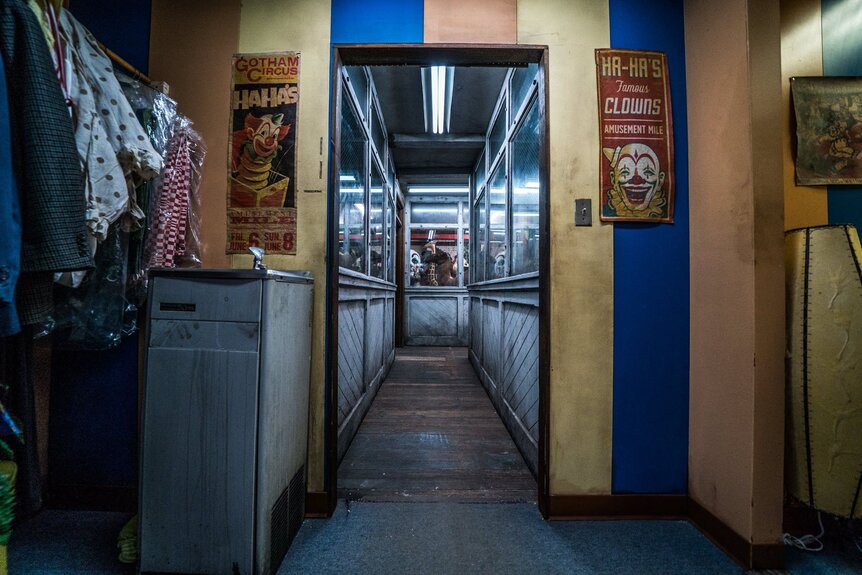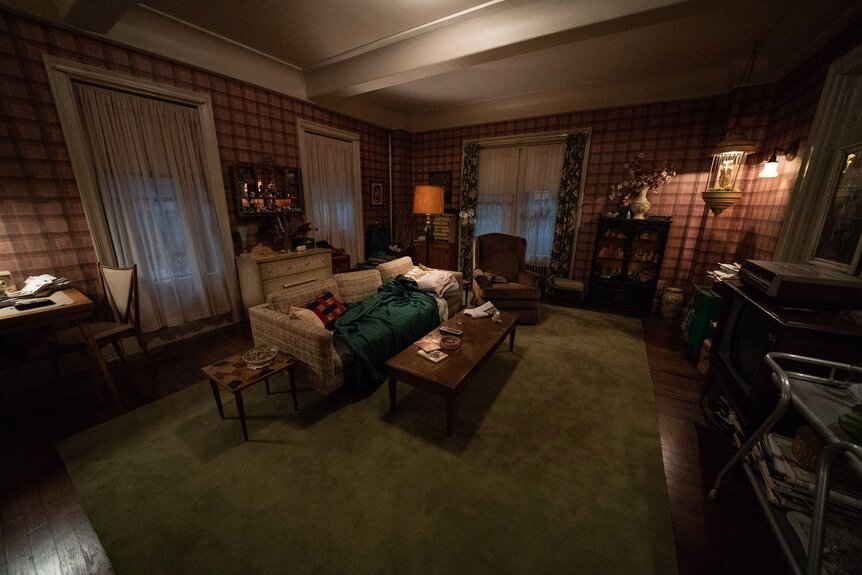Create a free profile to get unlimited access to exclusive videos, sweepstakes, and more!
Awards Contender: Inside the design of Joker's Gotham, a nightmare based on the comics
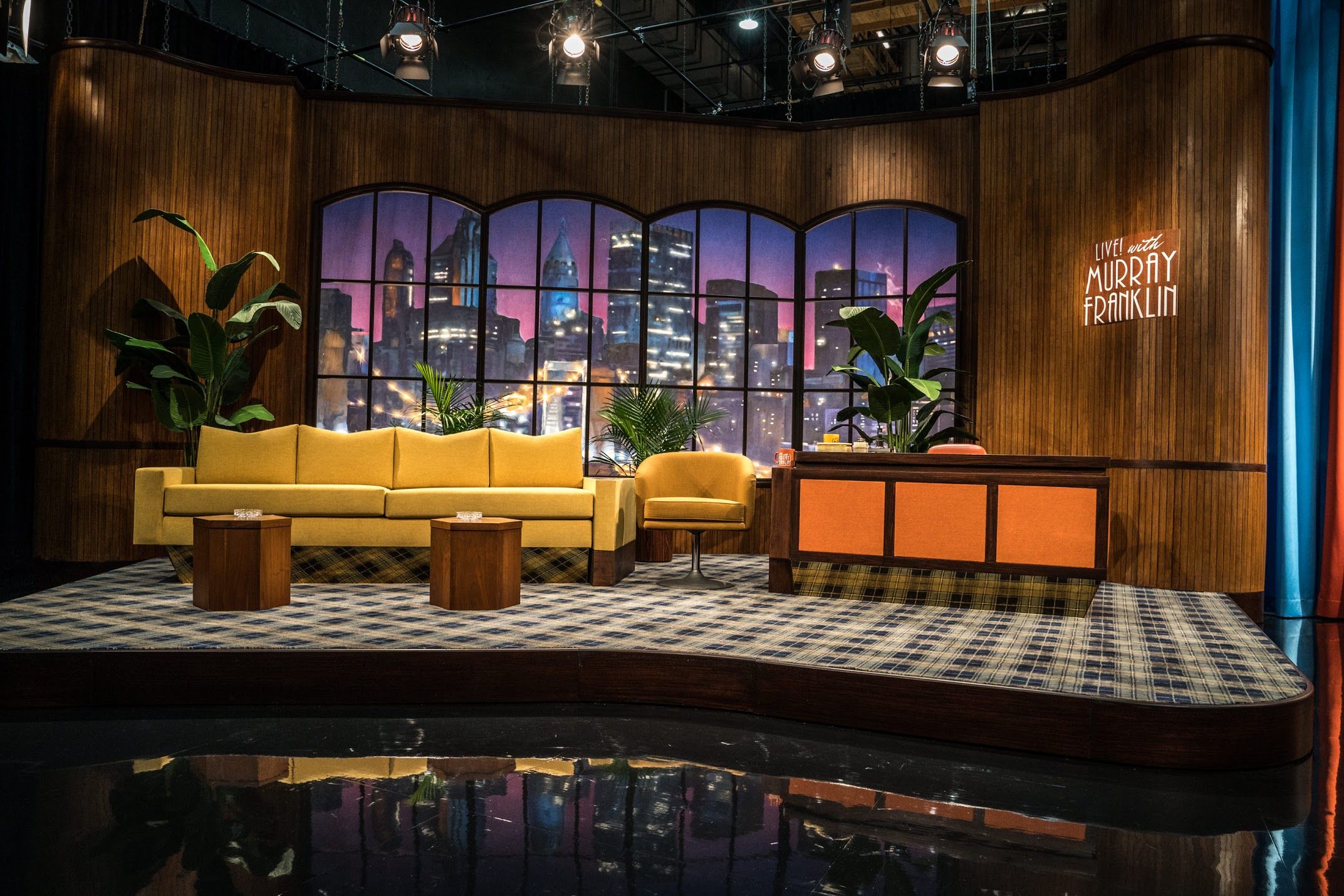
Welcome to Awards Contenders. This month, SYFY WIRE is talking to the actors, directors, designers, and craftspeople whose work was featured in the best movies and TV offerings of 2019, and who are now the leading awards nominees. Today, we're speaking with ADG-nominated production designer Mark Friedberg, set decorator Kris Moran, and pre-production researcher Michael Fails of Joker.
One morning in March of 2018, early in the process of prepping Joker, pre-production researcher Michael Fails was giving production designer Mark Friedberg an extensively detailed Joker tutorial at Friedberg's home office in Brooklyn. Despite having worked on The Amazing Spider-Man 2, Friedberg wasn't a comics connoisseur. So he had asked his protégé Fails, an admitted "comic book nerd," to become the keeper of the lore for the Joker filmmakers, and to teach Friedberg what he needed to know.
The lessons involved Fails introducing Friedberg to such key comics lit as Alan Moore's The Killing Joke, Grant Morrison's Arkham Asylum: A Serious House on Serious Earth and Batman: R.I.P., and Ed Brubaker's Batman: The Man Who Laughs, among much else. The Killing Joke, especially, and Joker's description of his past as multiple-choice, made a big impression.
"It's not clear if he's out of his mind, if he's really smart and wants us to think he's out of his mind, or maybe both of those things," Friedberg tells SYFY WIRE. "That was really influential to us."
While Joker's cinematography creates much of the illusion that Arthur Fleck might be imagining things, that idea is also baked into the movie's production design. All of the picture's version of Gotham City, for instance, is mapped out according to artist and illustrator Eliot R. Brown's representation of the city limits in DC's "No Man's Land" story arc. And there are visual meta-references throughout the film: a street, a bridge, a subway station or neighborhood – all have been renamed to honor of DC comic book writers and artists (such as Bob Kane, Scott Snyder, and Dave McKean) and other real-life figures (such as failed Ronald Reagan assassin John Hinckley Jr., whose own journals were an inspiration for Arthur Fleck's).
"There are no superheroes, no costumes in this world," Friedberg says. "There are no anti-gravitational forces or powers. It's just humans and subways. But we did the work to build up this world and not dismiss past versions of it. We're not trying to add to the lore, but we're looking at what this genre means in the myths of our culture."
Fleck's low-income residence in what would actually be the Bronx is here called Otisburg, and to the east, Ha-Ha's Talent Agency — the seedy company that employs Arthur as a street clown — is located, not in Coney Island, but in Amusement Mile, the park bought by Joker in the comics. The warehouse exterior of Ha-Ha's (which is actually under the elevated West Side Highway in Harlem) featured a giant mural by Malcom A. Rolling on the wall of the block-long building, but ended up not being visible in the film.
"That Amusement Mile mural, that was my favorite part of the movie," Friedberg says. "It breaks my heart that it got cut. It was really cool, so beautiful and sad."
Ha-Ha's, the strange space where "guys put on makeup and wear tutus and hand each other guns," was one of Friedberg's favorite sets. "It embodies much of what the movie is about," he says. "This no-longer relevant clown agency is almost an asylum of sorts, or a locker room, or backstage at the ballet. I mean, what is it?! It ultimately felt like the set was dressed by Fellini and shot by Sidney Lumet. It's beautiful, it's funny, it's terrifying, and it's about the blurred lines between comedy and tragedy, ugliness and beauty. Finding the right tone for that place was kind of the thesis of the movie."
So was Arthur's apartment — well, his mother's apartment. An aim of the production design here was omission: despite all the chaos and clutter, there is relatively little to suggest that Arthur actually grew up in this place, or still lives there now. Says set decorator Kris Moran, "When I was designing that apartment, it was very difficult because I didn't really understand some things. Where did his mother get her money? How much money did she have? Where did she buy things? Or did she find things on the street or at secondhand stores? Did she have taste? Did she care?"
Moran realized that the apartment's sad décor alluded to a parallel storyline in the script: how long has Arthur's mother has been in her dazed state? Is she taking all of her medication? Has Arthur moved back home to care for her? If he has, he clearly doesn't have his own room -- he's sleeping on a couch, with little space for his personal things. "There's a box of his clothes behind the couch to the left," Moran says. "I think we were sort of saying that her vanity didn't allow her to actually make room for him in that home at any point."
Then there's the ambiguity about whether Arthur's mother is delusional or is telling the truth about Thomas Wayne being his father (and forcing her to keep quiet about it), or whether she actually abused Arthur as a child (or if that was part of the cover-up). The movie's production design and set decoration keep the viewer wondering about these things. (Exhibit A: the photograph that Thomas Wayne allegedly signed.)
"That's what I think is so cool," Friedberg says. "You might go, 'Oh! He actually did do it, and he built this whole story behind it.' So Arthur might have grown up there. He might have been chained to the radiator. He might not have had a place to live."
Another hint that his mother's apartment was more of a prison for Arthur is its patterned wallpaper, which is meant to suggest that he's caught in a grid. "I was very surprised that they actually chose my crazy wallpapers," Moran says. "I got what I wished for, but it was a challenge to get any emotional air in that apartment."
